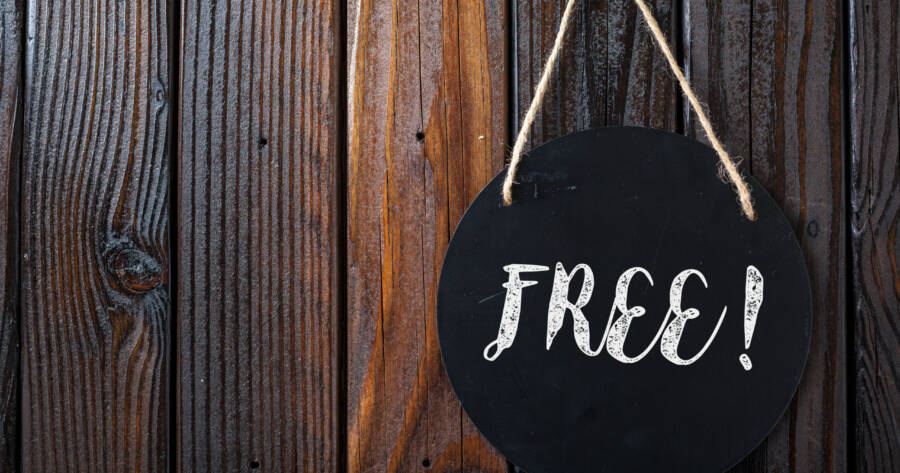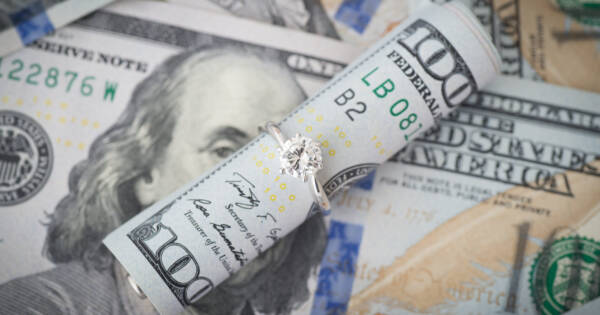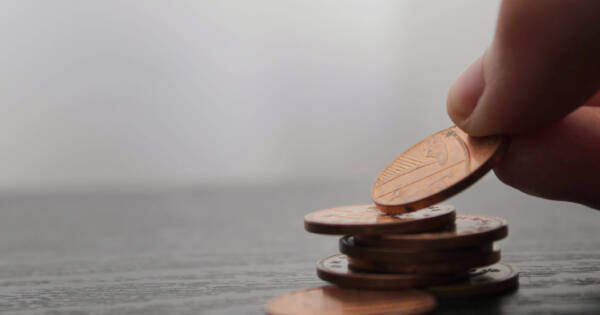We all love to get something for nothing. Whether it’s a free trial period for a new service, a free t-shirt with purchase, free shipping, or a free sample in the grocery store. Offering something for “nothing” will have otherwise rational people lining up down the block.
However, there’s a big problem with free. The allure of the zero-dollar price tag may blind you to the negative aspects of your “purchase.” It happens all the time. If you have ever found yourself buying two of something to get a third item “free,” standing in line for an hour for “free” ice cream, or purchasing a more expensive car because the dealer offered free oil changes, then you’ve been under the hypnotizing power of free.
Free Is Exciting
According to Dan Ariely, author of the behavioral economics book Predictably Irrational, we all feel something called loss aversion. It happens whenever we make a purchase. As badly as we may want to purchase an item, it still hurts to see money leaving our wallets. Ariely theorizes that anytime we do spend money, we will weigh the upsides and downsides of the transaction before we decide to buy. This is even true if you often spend money with impunity.
However, when you’re offered a free item it feels like there is nothing to lose in that transaction. No money is changing hands, after all. So you naturally think that there is no downside to the deal. Free is free, right? We’ve all fallen for this thinking at some point in our lives. But it’s simply not true.
What Free Costs
Depending on what you take for free, you will still give up something. It might be time, space, or even money. You’ll learn that things aren’t often truly “free.”
Waiting in a long line to see a free movie (that you don’t care about) is a huge time suck. It not only wastes the time you waited, but also the time spent watching the movie. Yes, you might end up seeing a great film. But probably not. I can tell you from personal experience that I’ve almost never waited in line for a free movie that ended up being any good.
If you’ve ever taken free books from the library giveaway pile, or free office supplies from a conference, you know that your $0 has just bought you clutter. You’ll have to find a place for it or throw out. And spend time dealing with whichever option you choose. In fact, I have multiples of the same free giveaways (from the same companies) because there are conferences I go to every year. They give out the same stuff over and over again! As I look at some of the mountains of free pens I have on my desk, I start to question myself. Let me tell you that it’s much better to live in an uncluttered home than to have free items you don’t need.
When Free Isn’t Free At All
As for free items costing you money, that’s one of the oldest tricks in a marketer’s playbook. Offering something for free (with a purchase of something else, of course) makes it that much more attractive to you, the shopper. You’ll see this tactic used in many different ways. There’s the “buy two, get one free” deal, or the “free gift with purchase” package, or the “free service with purchase” offer. It all boils down to them trying to get your money.
Free items don’t always cost you money upfront either. Giving away a free trial, like how Amazon routinely offers 30 day free trials for their Prime membership, is a tactic that’s become extremely popular since the invention of credit cards.
The idea is to hook people in. They hope you either use the service so much that you can’t live without it, or that you simply forget to cancel the subscription. You’ll keep getting billed, since everything is automated. That’s part of the reason why a yearly subscription is cheaper. If you don’t happen to look at your credit card statement very closely, you’ll just be on the hook for another month. Or another year, in some cases.
Fighting the Attraction of Free
I have a friend who is an aficionado of thrift store shopping. They live by the mantra of “never pay half price for something you wouldn’t buy for full price.” This goes doubly true for free items. Unless the free item is something you really would be willing to buy anyway, just walk away from it. Otherwise, it’s only going to collect dust somewhere in your house. Eventually, you’ll have to spend effort to pack, donate, sell, or get rid of it. You may even have to pay to get it hauled off to the garbage dump. That makes your “free” couch or coffee table much less free than the day you acquired it.
Exceptions to the Rule
The exception is if you are getting something else out of that “free” promotion. The Baskin-Robbins in our area hosts a free ice cream day every year. The lines go out the door and wrap around the whole plaza. Waiting in line can sometimes drive me crazy. I often object when my wife suggest that we join in on the hoopla. My argument is that we could just spend a few dollars to skip the line and go the next day. We’d save ourselves an hour or two of our precious life, and still get ice cream.
But then my wife reminds me that going and spending time together is the actual reward, not the ice cream. Seeing the line and laughing about our behavior, spending time with the kids while we wait, and going with family friends all make the whole experience enjoyable. It’s an excuse to get together with our friends and have a little fun. Sure, the ice cream itself may not be worth the wait, even if it’s free. However, we are getting far more than just ice cream in this case.
If we instead spend an afternoon at the mall, we might end up paying for ice cream and then spending some more money on a Ferris wheel ride or a nice dinner out. So maybe the free ice cream actually saved us some money here.
Free can be costly, so beware. But free can also be enjoyable. Just take care to choose the ones that you find truly beneficial. Don’t just flock to a deal whenever some marketing team decided to call it “free.” The true cost to you could be far from nothing.
 Shutterstock
Shutterstock







